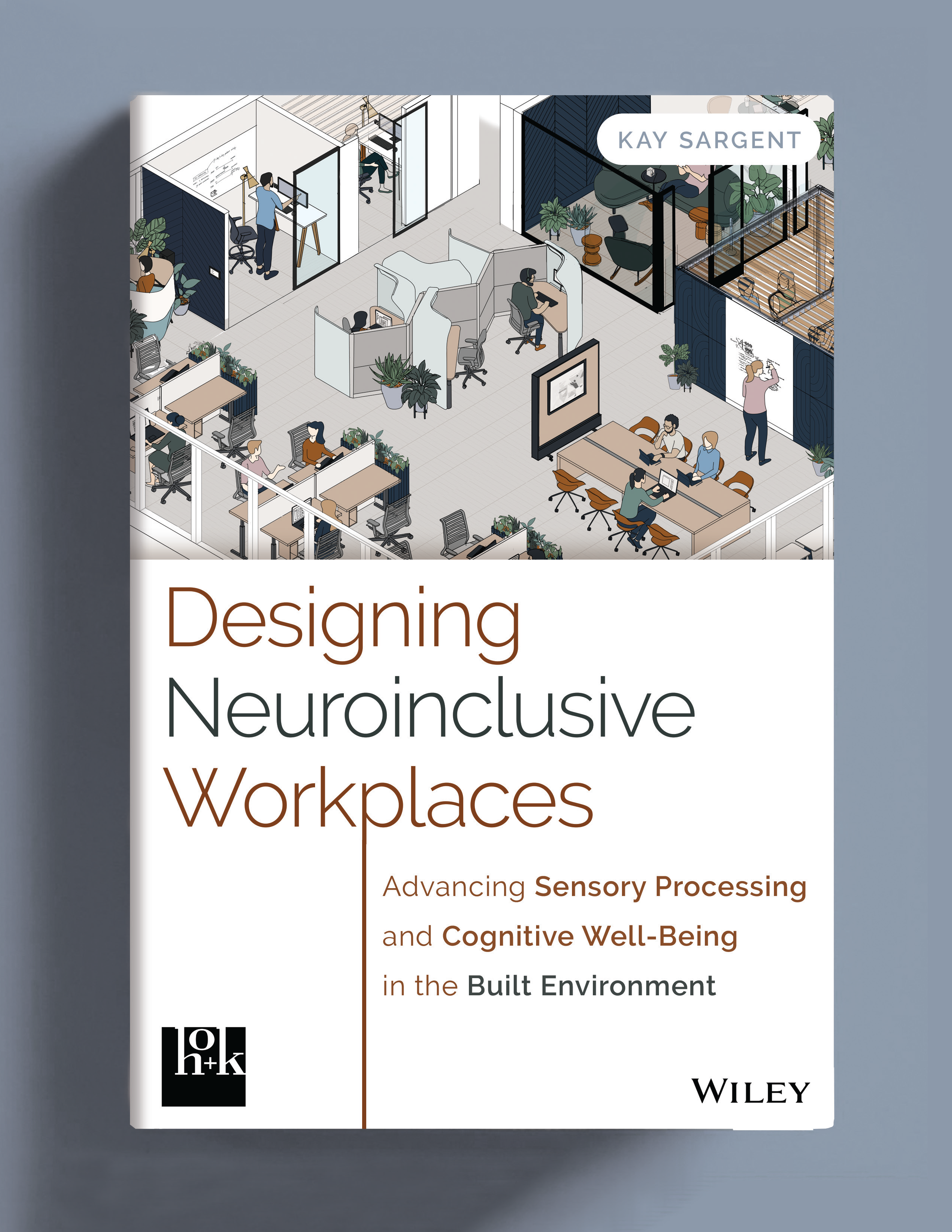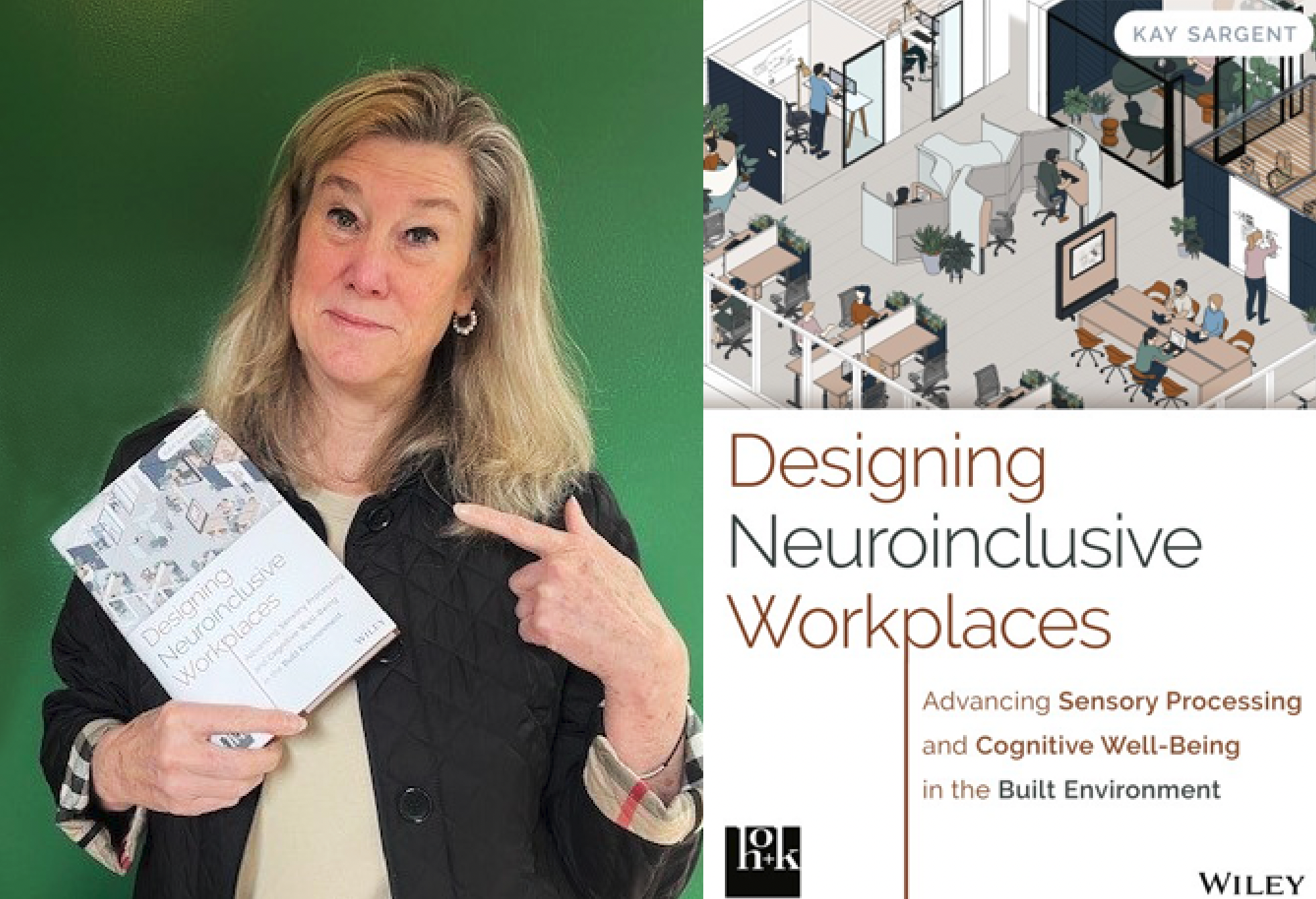It's estimated that 18 percent of the population has a physical disability. Rightfully so, we've changed how we design buildings and cities across the planet to accommodate their needs. It's also estimated that 20 percent of the population is neurodivergent. But what are we doing to address their needs, or the needs of everyone who is being impacted by sound, temperature, lighting, and other sensory elements in the built environment—which basically is all of us? The answer is little to nothing in many spaces.

HOK recently released a comprehensive book on neurodiversity, "Designing Neuroinclusive Workplaces." The book addresses sensory processing, cognitive well-being, and neurodiversity in the built environment, including the role technology plays in doing so. Here are some excerpts from the book.
Neurodivergents often are out-of-the-box thinkers, creators, and innovators. Studies have also shown that autistic people are far more likely to be on the extreme hyper-systemizing end and often have increased focus, more deliberative decision-making, visual acuity, logical thinking, and an affinity for technology. These specific skill sets may lead many into the science, technology, engineering, and math, STEM, fields where their strengths can be extremely beneficial.
Several tech companies have identified this potential and have created targeted programs to attract neurodivergent professionals.
- At DXC Technology, employees voluntarily promoted the firm's autism hiring program, representing organizational values in action.
- Microsoft started an Autism Hiring Program in 2013 and hosts an annual "Ability Summit" for employees, outside experts, and governments. In these summits, business and academic leaders discuss the importance of an inclusive culture and explore how technology can empower people with special abilities.
- IBM launched its Neurodiversity@IBM program in 2015 and has continued to evolve it with input from neurodivergent employees.
- In 2013, SAP began its Autism at Work program. Neurodivergent team members helped develop an innovation that led to a technical solution worth approximately $40 million in savings.
Tech tools can also help neurodivergent individuals thrive regardless of the sector they are employed in. Increasingly smart technology is central to creating more productive environments and helping to foster a more neuroinclusive approach. It is not uncommon to see companies leverage the following strategies to do so:
- Meeting rooms feature scene-setting lighting and temperature controls, allowing individuals to customize their environment to suit their sensory needs.
- CO2 monitoring ensures optimal air quality, significantly impacting cognitive function and comfort.
- Digital totems display occupancy heat maps, empowering staff to choose work areas that suit their preferences.
- Digital tools and apps to guide users, keep them connected, and create varied experiences for different user groups.
New interfaces and advances in technology are opening avenues for communication, expression, and interaction that aid in creating solutions that are more inclusive. Mobile devices and tablets are having a significant impact on the ability of neurodivergents to communicate on their terms and in a manner that best suits them. Tools like closed captioning, meeting recordings, eye-tracking readers, and interactive extended reality (XR) are improving opportunities for engagement and challenging misconceptions about intellectual abilities.
It is estimated that up to 30 percent of autistic people may be non-speaking. Alternative and Augmented Communication (AAC) technology enables many in the non-speaking community to find their "voice" and communicate effectively. Autistic YouTube personality Carly Fleischmann is a fitting example of how tech tools can help. Once considered a non-verbal, low-functioning autistic person, she now uses a digitally synthesized voice to host her own online talk show.
Ultimately, the goal is to create spaces where all can thrive, and leveraged appropriately technology can play a supporting role in doing so."
—Kay Sargent
AI-powered tools may prove to be invaluable for neurodivergents. AI chatbots can provide personalized assistance for managing daily activities, reducing stress, and staying on task. AI can aid in work tasks like checking spelling, organizing tasks, and providing meeting transcripts. AI-powered building sensors can provide real-time data for automated environmental adjustments, including changing the lighting level, reducing glare, adjusting the temperature, and providing the desired sound levels to create a more comfortable and calming work environment.
Ultimately, the goal is to create spaces where all can thrive, and leveraged appropriately technology can play a supporting role in doing so.
To learn more about neurodiversity, why it is great for business, the findings from our research, and how to create spaces where all can thrive, click here.

